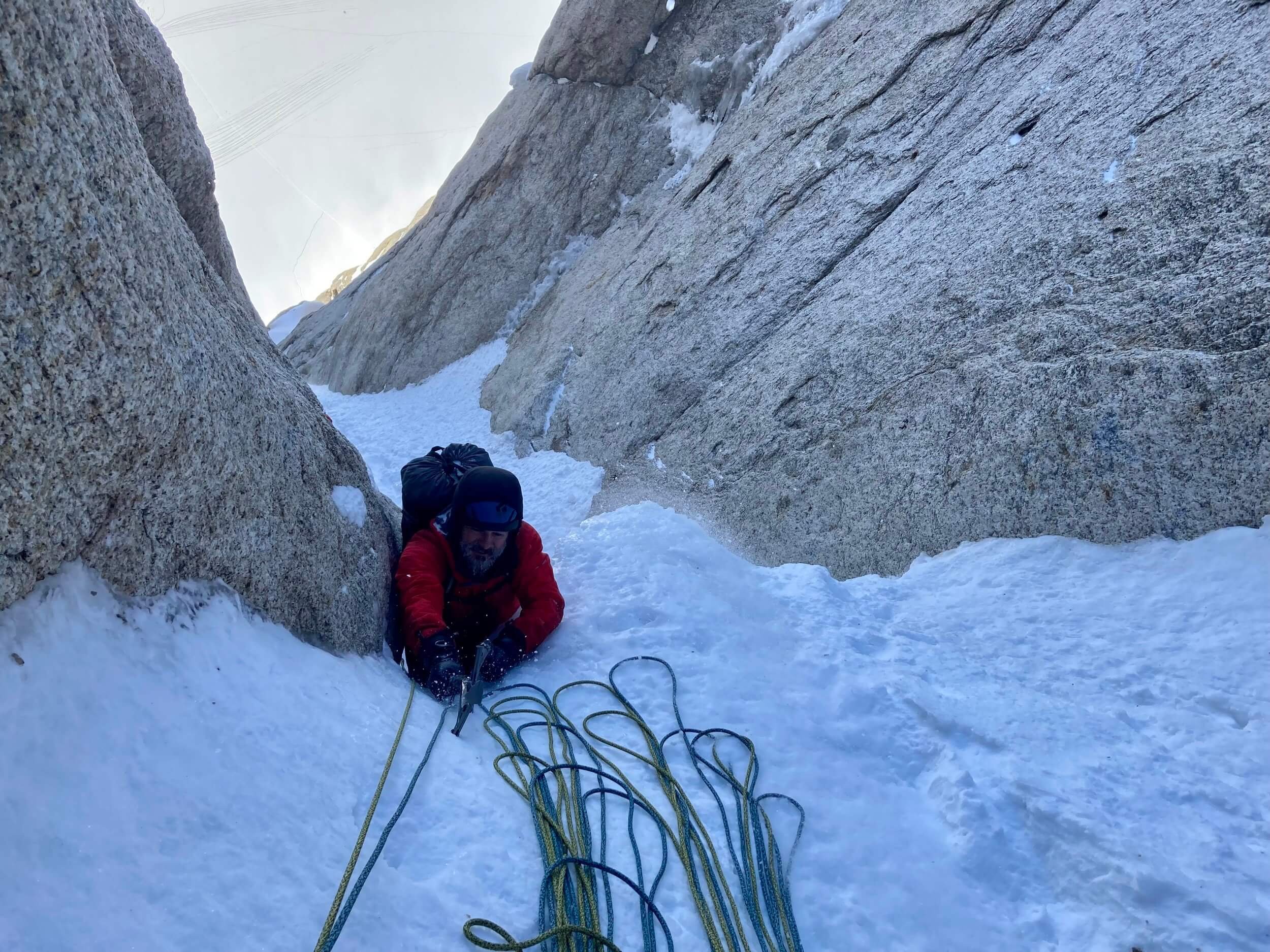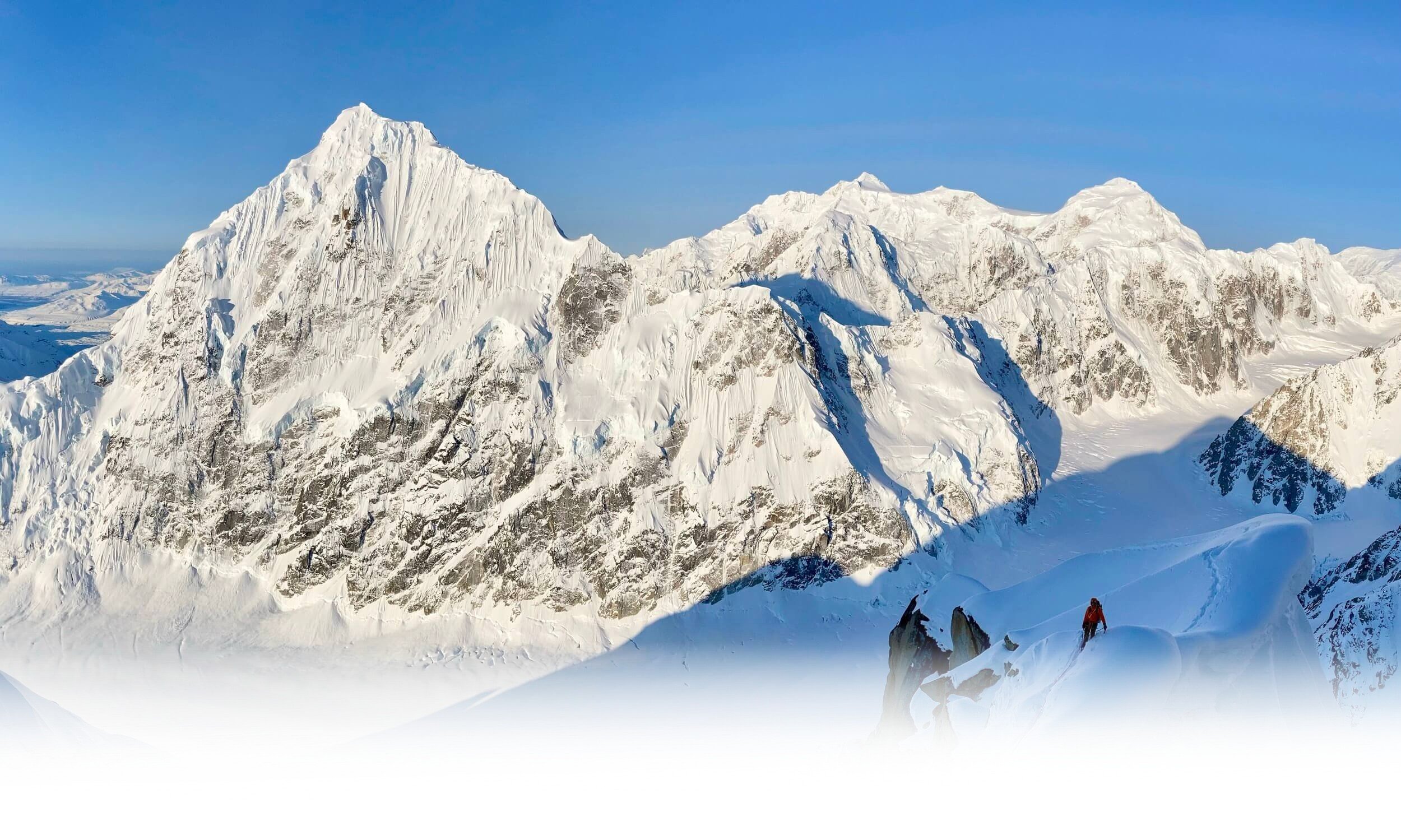
Climb The Iconic Southwest Ridge Of Peak 11,300
Climb the Southwest Ridge of Peak 11,300, an exposed corniced ridge with steps of moderate mixed climbing and magnificent views of the north face of Mount Huntington. While not the most inspiring of mountain names, Peak 11,300, a reference to its elevation, is small compared to the towering neighbor Denali, but on its own it is a prominent peak rising over 4,000 ft above the landing strip on the West Fork of the Ruth Glacier. Once considered the perfect preparation climb for the infamous Cassin Ridge on Denali, the Southwest Ridge of Peak 11,300 is a worthwhile climb in its own right and is on many aspiring alpinists tick list. In fact, a former owner of Skyward Mountaineering, Steve House, even selected this route as his route of choice in the book 50 Favorite Climbs in North America.

Advanced technical mixed climbing and steep snow
5.8, M4, 60°, V
Multipitch ice/mixed climbing and alpine snow climbing experience required
Climbers must be efficient WI4 and 5.9 climbers with a high level of fitness
8 day itinerary (Anchorage to Anchorage)
The climb typically takes three 10-12 hour days, camp to camp
Denali National Park
Peak 11,300 (Mt. Kudlich)
11,301 ft / 3,156 m
Exposed Corniced Ridges, Challenging mixed climbing and incredible bivys
The climbing on Peak 11,300’s Southwest Ridge is mostly moderate, with a few sections of 5.8 climbing interspersed with steep and exposed snowy ridge. Traversing this ridge is never desperate, but involves much tedious negotiating of spurs, gendarme and cornices. Being a ridge climb, the overhead hazards are relatively low and the the rock quality is mostly very solid. This is a fantastic moderate Alaskan alpine adventure in a remote area with absolutely mind-blowing views in all directions.
-
The Southwest Ridge of Peak 11,300 climb begins with an alpine start and an easy 30 minute walk to the toe of the ridge. The lower portion of the route is defined by short steps of mixed climbing and multiple steep snow pitches. Guarded by a final steep snow slope called the S-Couloir, Grey Rock bivy is a large rock cave offering shelter from the wind and can comfortably fit two alpine tents. This is typically our preferred bivy spot for the first night and offers an incredible protected location conveniently located just under halfway up the route.
-
The upper route is defined mostly by traversing an exposed corniced ridgeline and a few steps of mixed terrain, including the crux pitch (a short, steep rock face capped by a chockstone to surmount). There are several small and exposed bivouac options along the ridge that we may utilize, though weather permitting we often aim for the second night's bivy to be on the broad, but spectacular summit of Peak 11,300.
-
The final day is spent negotiating the descent, a complex affair requiring down-climbing moderate snow slopes and rappelling a broad rocky ridge until reaching a glaciated basin below the route and navigating multiple large crevasses while walking back to camp.
-
As with all expedition alpine climbing, it is necessary to have some flexibility and be understanding that weather and conditions dictate the schedule. The expedition to the Southwest Ridge of Peak 11,300 is often planned as an 8-day itinerary, taking into account the time to fly into the West Fork of the Ruth Gorge, establish camp, recon the approach/route and allow for weather contingency. The climb itself is typically done over the course of 3 days with two bivouacs on route.
Our first day can be a jam-packed whirlwind. Your guide will pick you up from the airport or your hotel in Anchorage and transport you to the town of Talkeetna, a 2 hour drive. After organizing equipment and weighing gear for the flight manifest we play the “hurry up and wait” game for a flight into the mountains. We’ve been using the highly reputable Talkeetna Air Taxi for almost 30 years and fully trust their pilots, we wouldn’t fly with anyone else! The flight into the Alaska Range is incredible, a highlight of all trips. We land in the West Fork of the Ruth Gorge, a remote area directly below Peak 11,300 and with breathtaking views of the north face of Mt. Huntington.
Depending on conditions, we may opt to recon the approach and entrance pitches on the route on day 2 or let snow settle from recent storms. Our summit day starts with an alpine start, we’ll approach the base of the route (only a short 30-45 minute walk with some crevasse navigation) and start steep snow climbing right away. We have several extra days built into the itinerary to allow for stormy weather to settle to set you up for success.
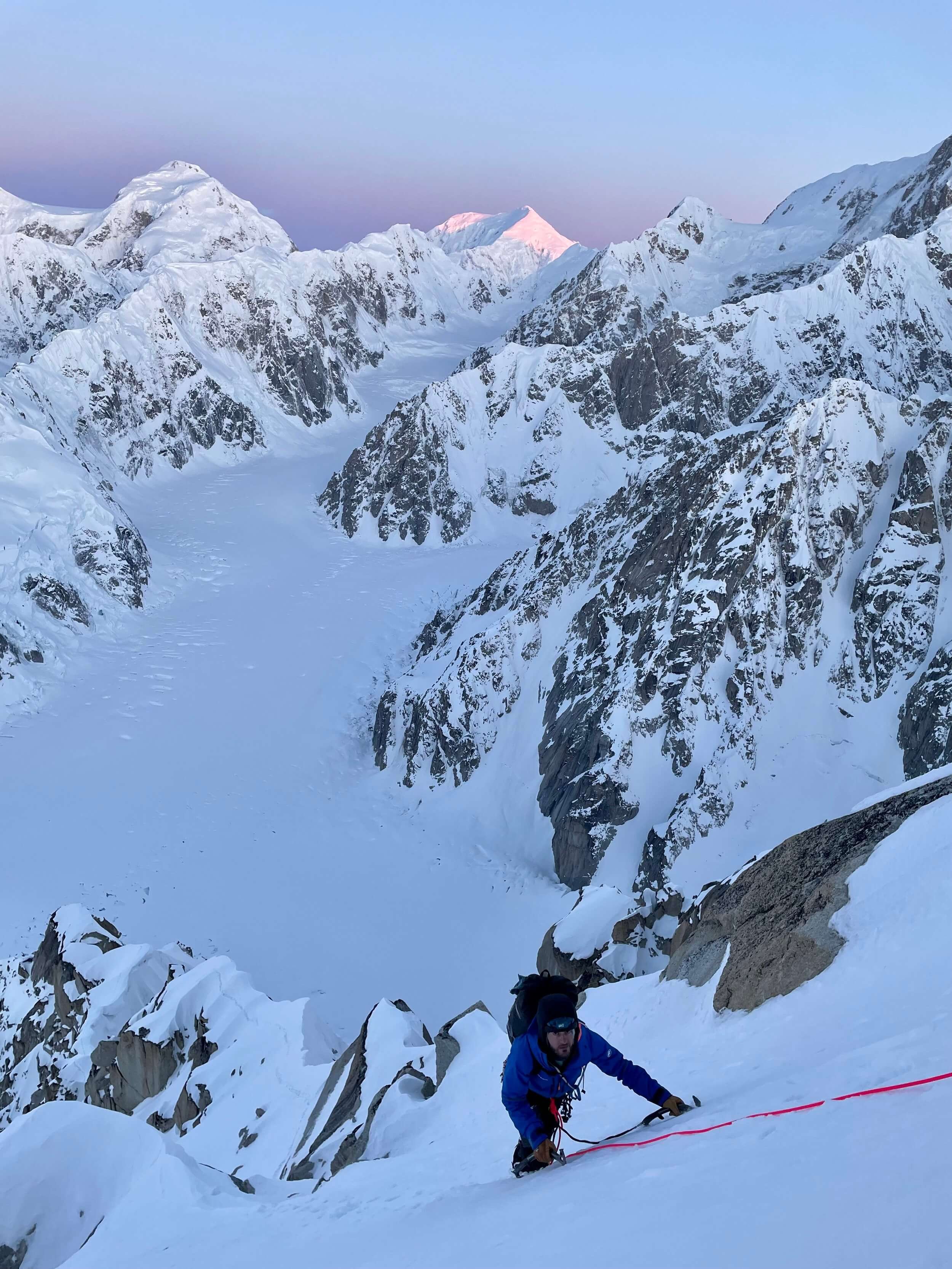
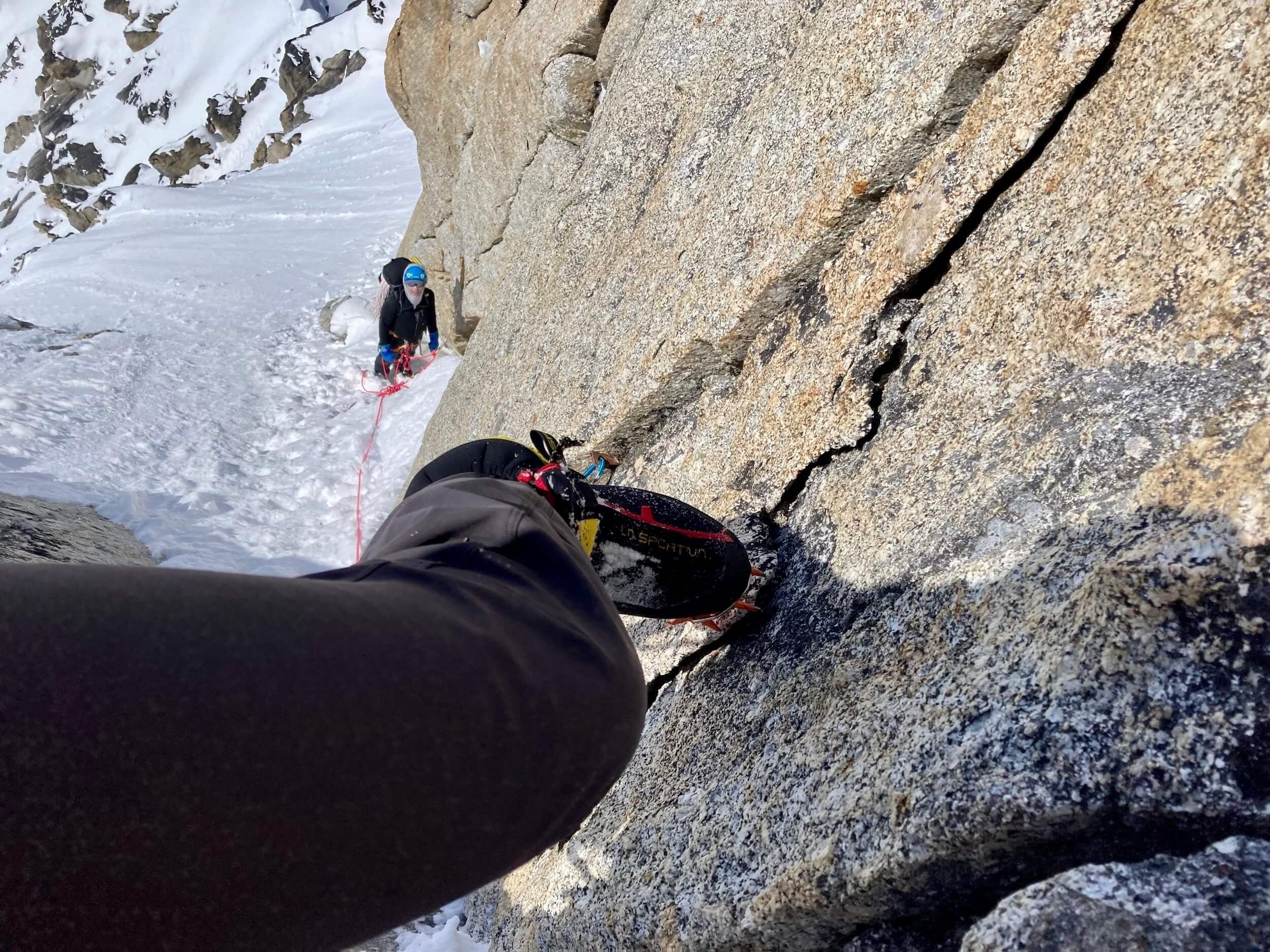

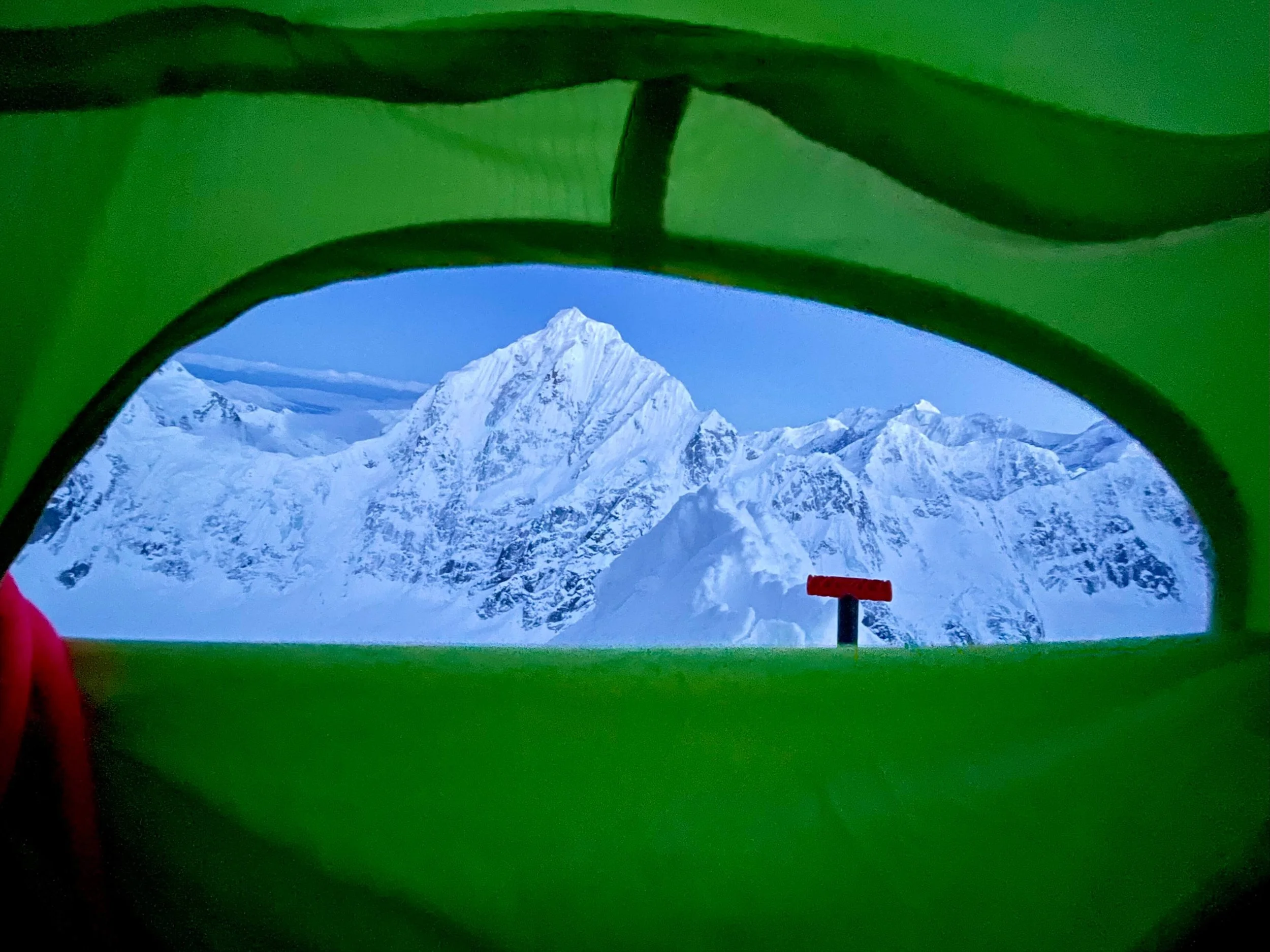
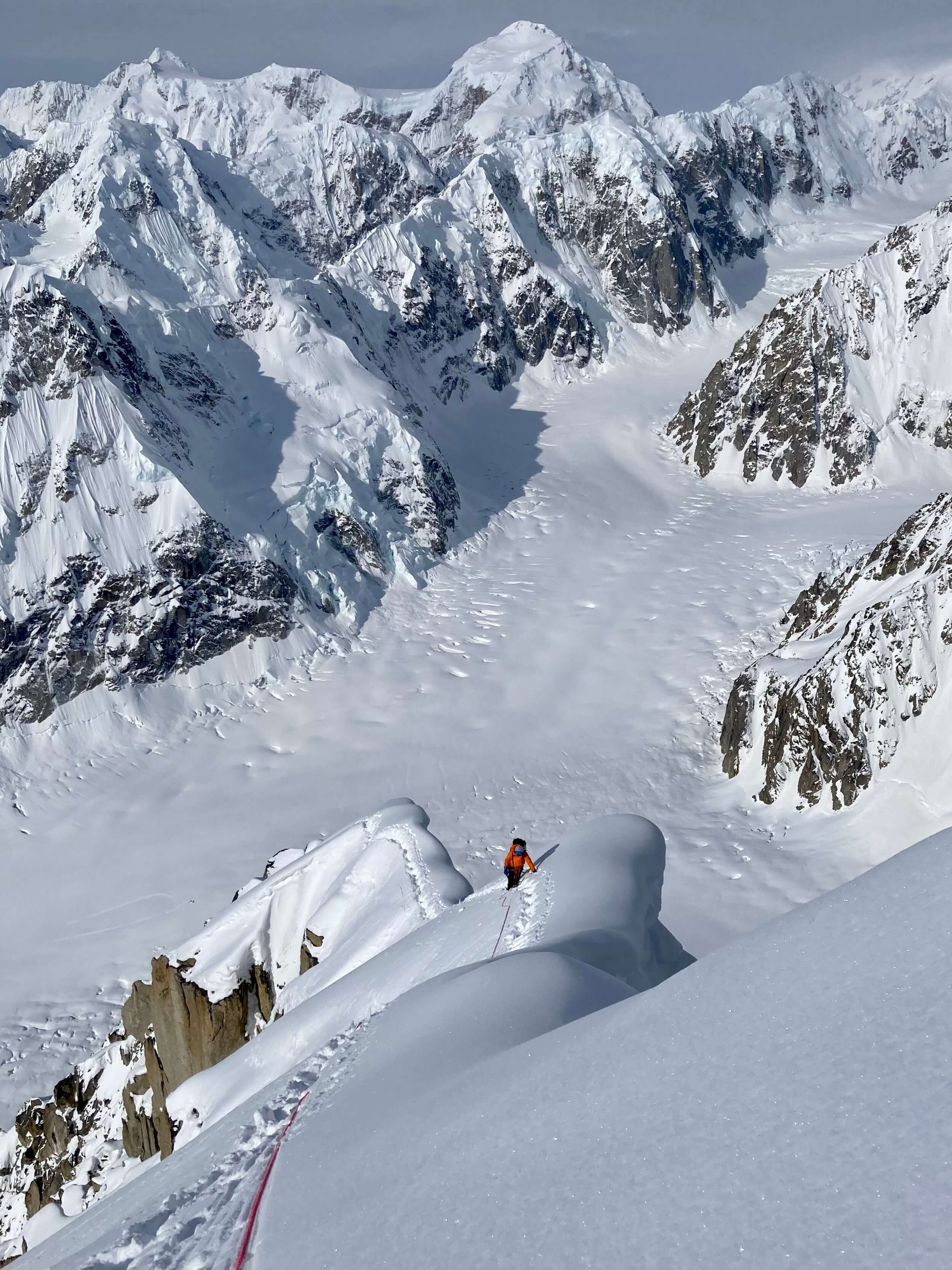
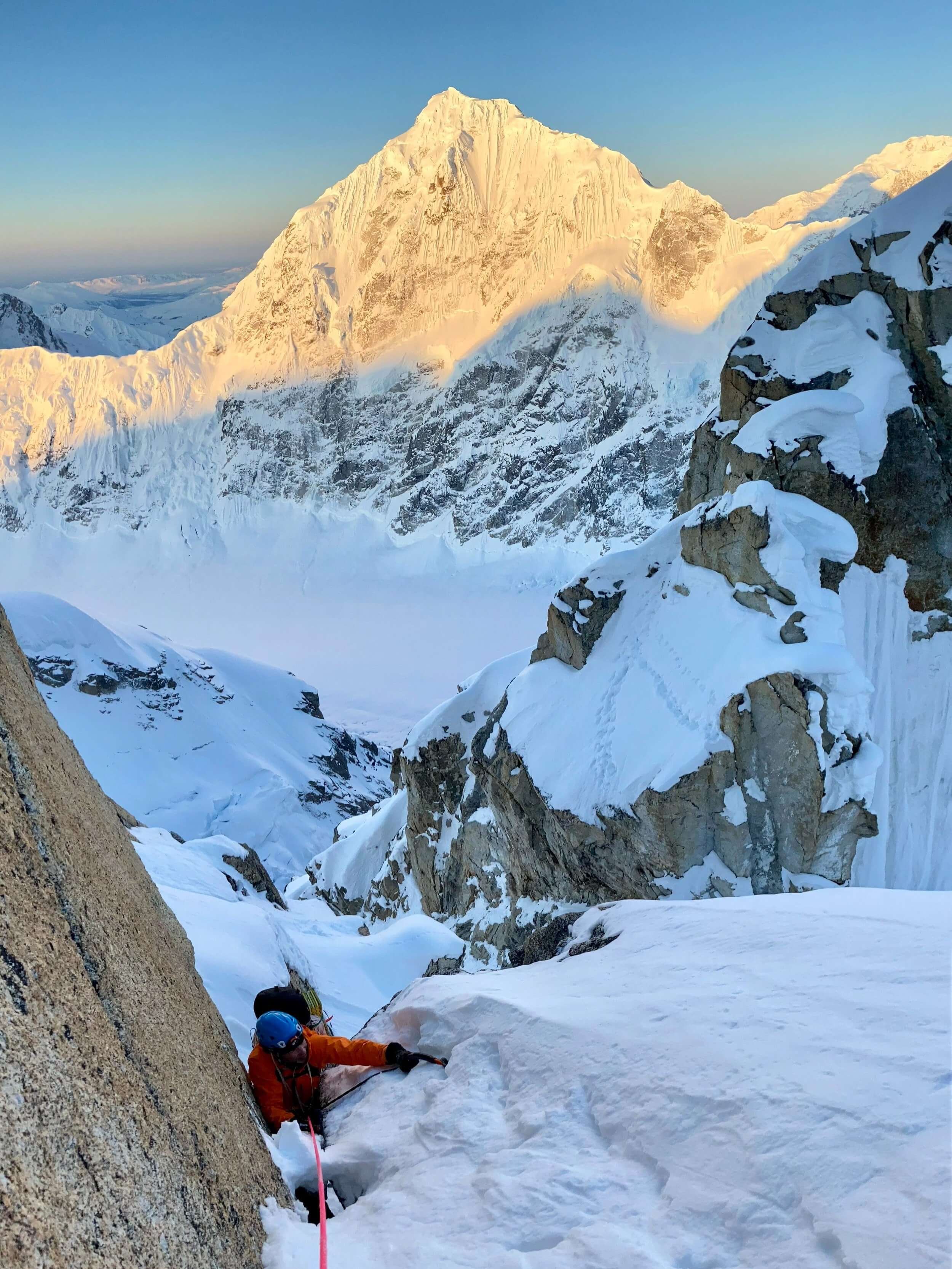

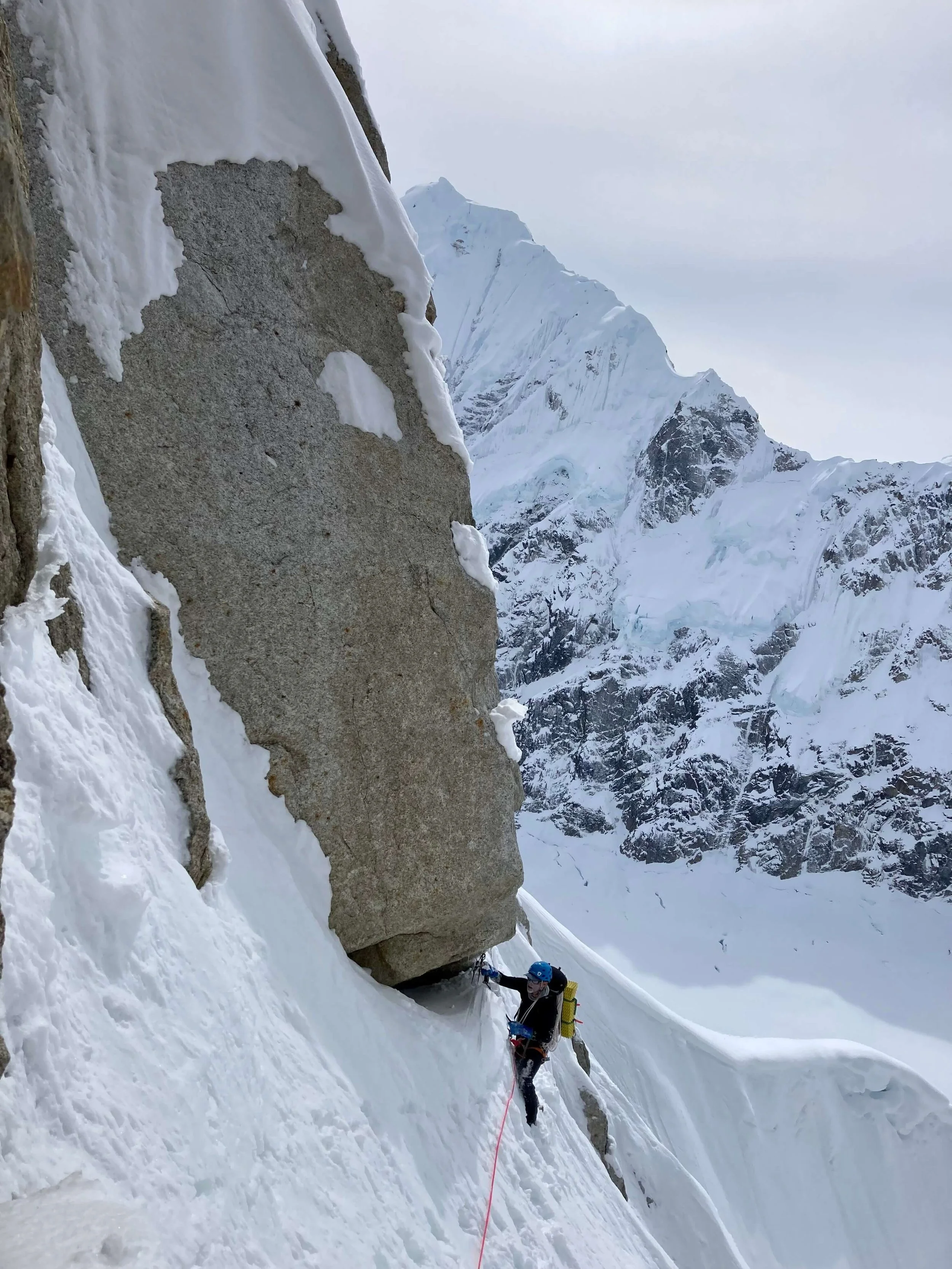
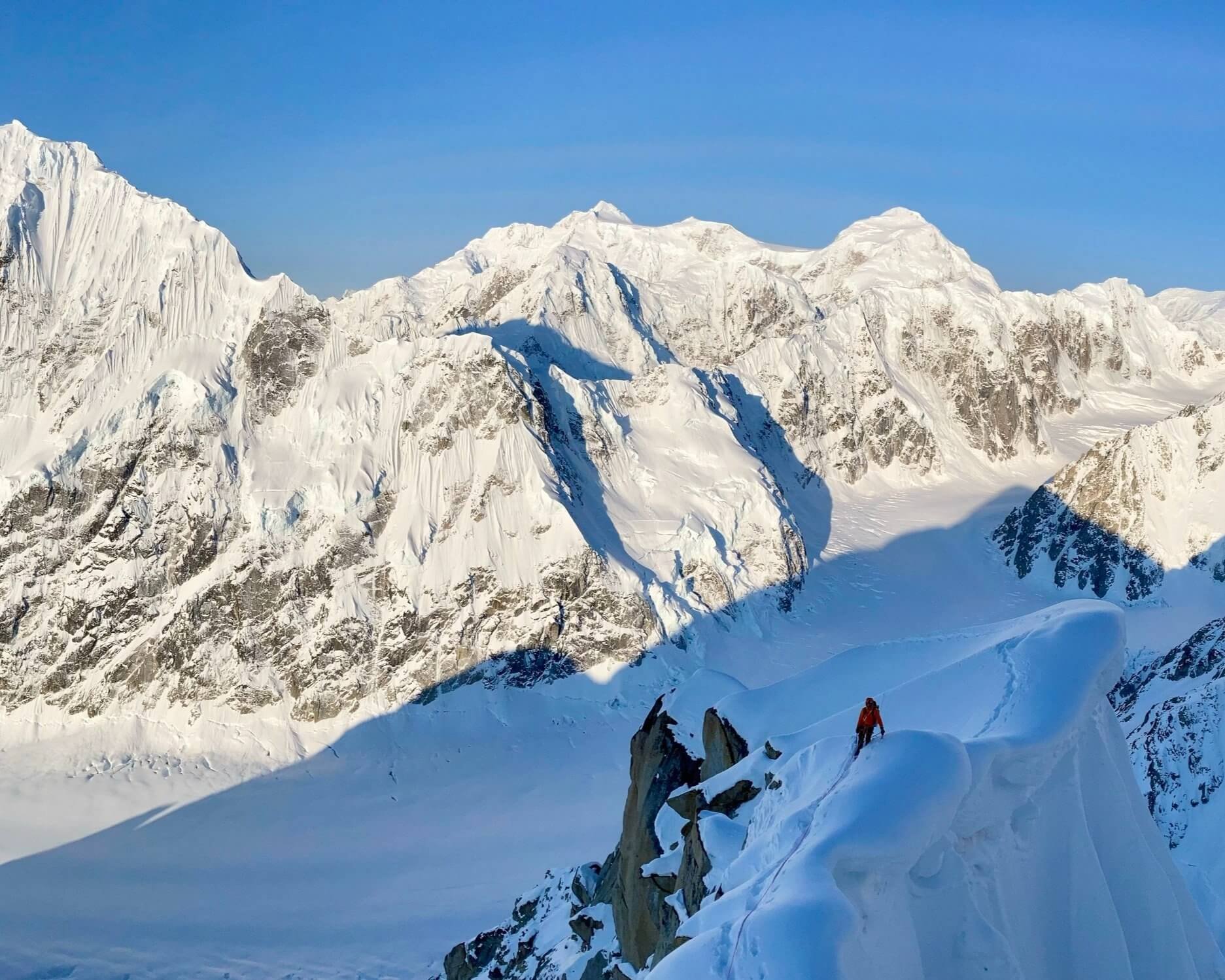
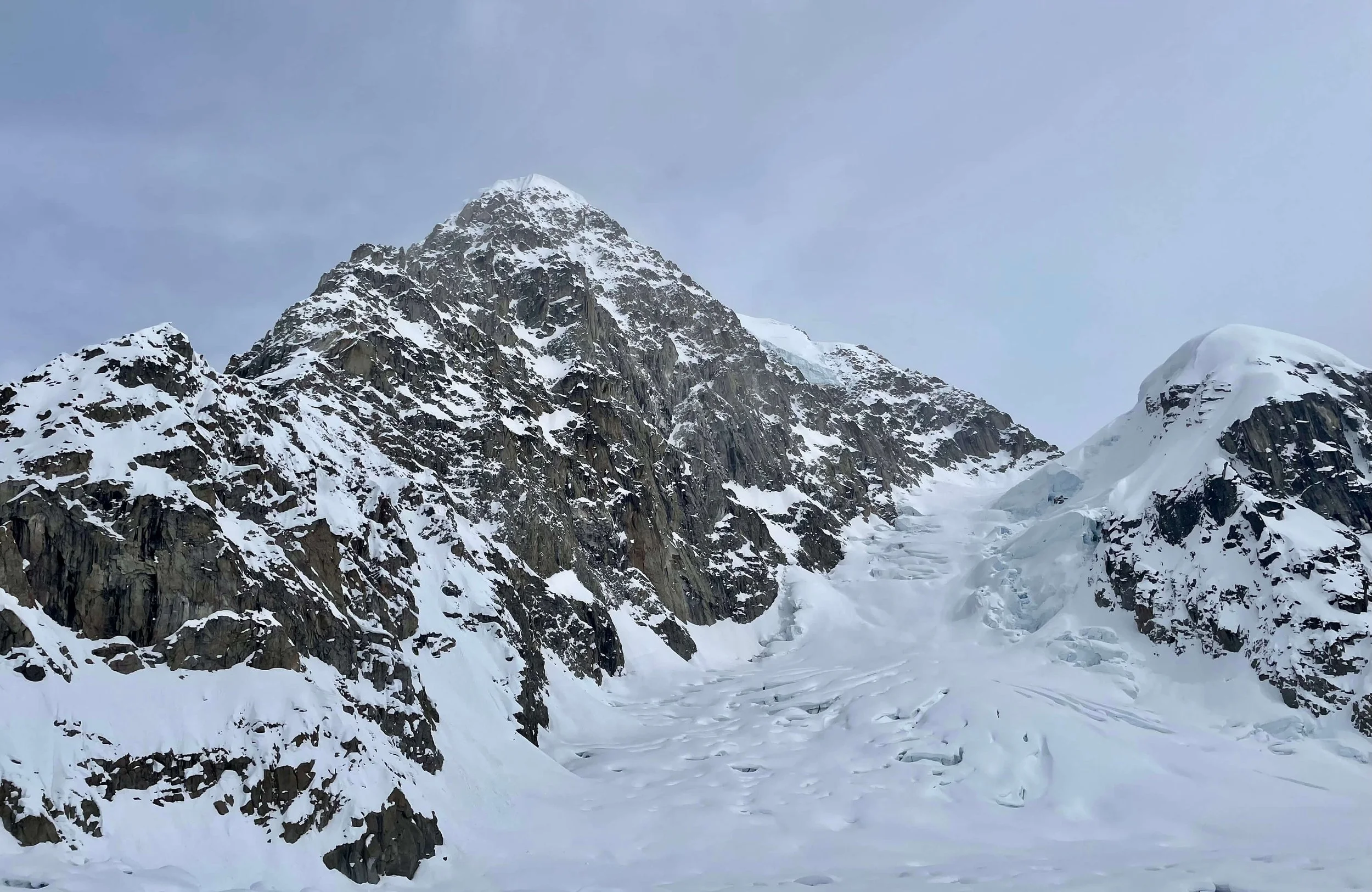
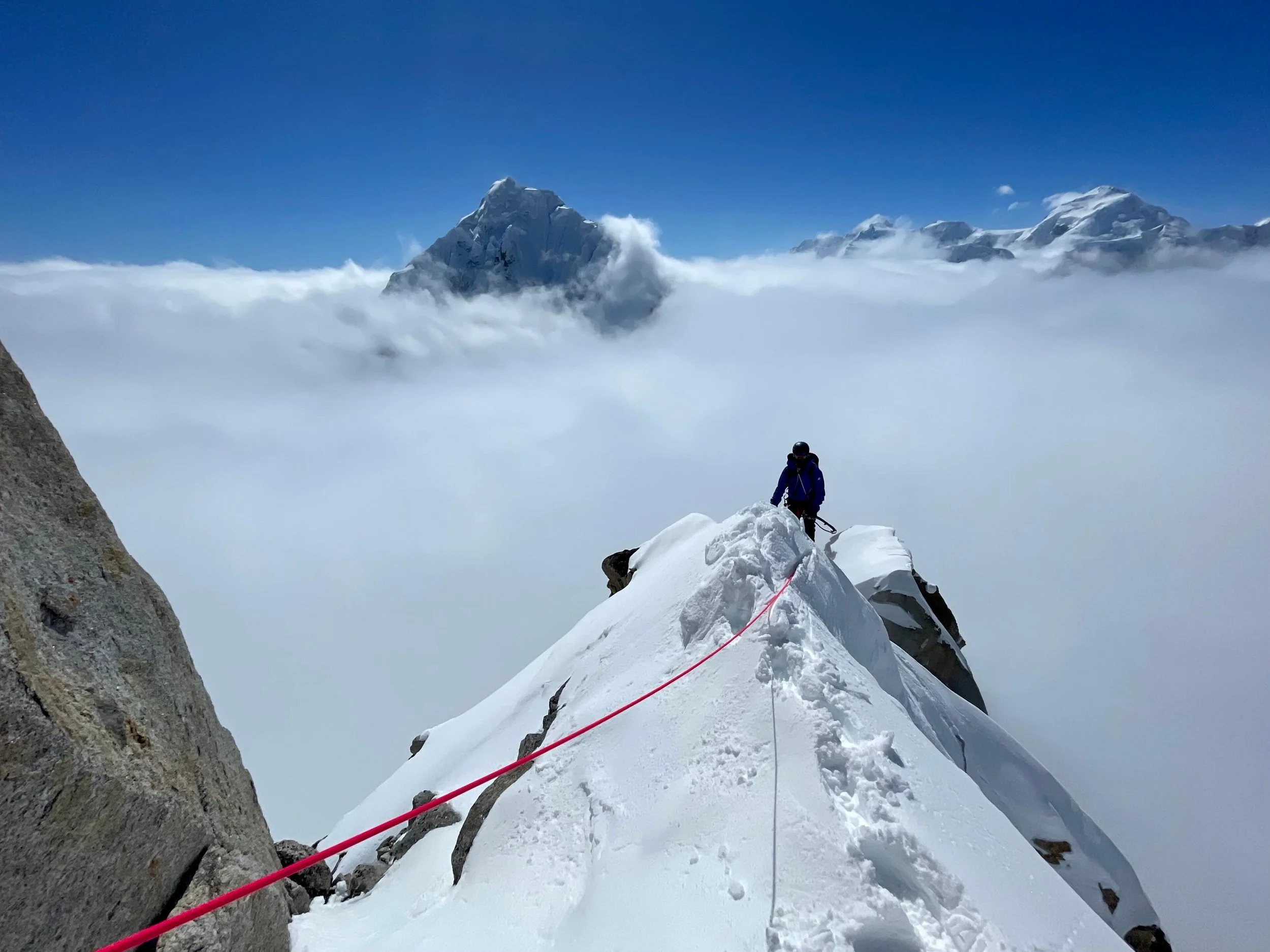

Frequently asked questions
Below are answers to common questions about climbing Southwest Ridge of Peak 11,300 in Denali National Park with Skyward Mountaineering:
-
Peak 11,300, a simple reference to the peak’s elevation (also less commonly known as Mount Kudlich), is a glaciated, granite summit in Denali National Park about 6 miles southeast of Denali. Tucked into the West Fork of the Ruth Glacier, a major tributary of the Ruth Gorge, Peak 11,300 is surrounded by dramatic peaks such as Mount Huntington and the Rooster Comb. Basecamp is conveniently located at the toe of the Southwest Ridge, with incredible views of the route above and dramatic views of the north face of Mount Huntington, an imposing snow and rock face guarded by overhanging seracs that occasionally release impressively large avalanches into the West Fork.
The Southwest Ridge is the peak’s easiest and most popular route - celebrated as an elegant, moderate alpine climb. The climb ascends the corniced ridge with several mixed climbing steps and a final icy headwall guarding the summit. The descent traverses diagonally into the cirque east of the peak and back to basecamp at the toe of the Southwest Ridge.
-
The Southwest Ridge features roughly 4,000 feet of sustained steep snow climbing along an exposed ridge that blends rock and mixed pitches. The route is typically climbed over 3 full days, although the team’s pace is largely conditions dependent.
Due to the route’s complexity, commitment, remoteness, and length it is important for climbers to have great physical fitness as well as a solid background in technical glaciated mountaineering, ice and mixed climbing. We recommend booking guided climbing trips with us in Ouray to hone your mixed climbing and ice climbing techniques plus big alpine climbing objectives such as in the North Cascades. Here are a few benchmarks to feel confident climbing the Southwest Ridge of Peak 11,300 with us:
Comfortably toprope climb 5.9, WI4 and M5. You should be able climb a 30 meter pitch within 15 minutes.
Stairway To Heaven (6 pitches, WI4) in Eureka is a good preparatory ice climbing route.
Birdbrain Boulevard (8 pitches, WI4, M5) in Ouray is a good preparatory mixed climbing route.
North Ridge of Kulshan is a good preparatory mountaineering route.
Torment-Forbidden Traverse is a good preparatory mountaineering route with technical rock climbing and a bivy on-route.
-
Yes! Skyward Mountaineering puts a lot of value in working with you to personalize every guided climbing trip, especially so with expeditions. One popular option to add into the itinerary would include a flight bump with Talkeetna Air Taxi to combine an ascent of Peak 11,300 with other routes in the Alaska Range such as Ham and Eggs on the Moose’s Tooth or linkups on the Kahiltna Glacier. Also, climbers may want to have a shorter or longer climbing expedition, we can likely customize the itinerary to accommodate your schedule, such as a “smash-and-grab” ascent where climbers wait at home for a good weather window, fly up to Anchorage last minute and climb the route over only a short time frame, making it possible to climb Peak 11,300 over a long weekend!
Let us know what your goals are and what type of adjustments you’re interested in, our admin staff are climbers, skiers, and guides so we’re happy to chat with you about all the possibilities and make personal recommendations. Contact us to discuss your dream expedition.
-
The Southwest Ridge on Peak 11,300 has a variety of climbing styles and terrain to navigate making the decision it important to climb during a window where snow conditions are ideal but the glacier is not so bare that it’s all blue ice. After several ascents during a spectrum of the season we have found the best conditions on the Southwest Ridge to be from late April to mid May, though it’s possible to have annual variations based on the seasonal snowpack which may result in conditions remaining good later into the season too.
-
We have a detailed equipment list to help you prepare and pack for your climbing expedition. If you have questions about any of the gear please let us know, we’re happy to help make recommendations or clarify. Climbers are responsible for providing their own personal clothing, climbing and camping gear.
Skyward Mountaineering provides all of the group camping and climbing equipment, this includes personal tents and a basecamp/cook tent, stoves and cookware, camp maintenance gear, ropes, snow/rock/ice protection, anchor material, and other technical equipment. We also maintain a cache of equipment in Talkeetna in the event that personal equipment breaks, so your trip won’t be cancelled if you realize the airline lost your crampons. Our tents are comfy and burly 4-season tents and each climber can choose to sleep in their own 4-person basecamp tent (talk about luxury!) or share a tent with their climbing partner, if applicable.
-
If you know what dates you want to climb Ham and Eggs, you can book your trip directly on our website. You can also get in touch to discuss your goals and ask any questions, we’re happy to help and send you a custom booking.




